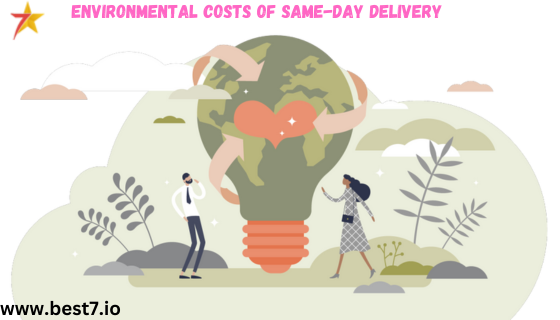
E-commerce has bloomed over the decade, allowing hundreds and thousands of start-ups, online stores, and other businesses to thrive both locally and internationally. It also increased demand amongst customers, who now expect their orders to be delivered incredibly fast. As a result, same-day delivery services began popping up, ultimately reshaping the e-commerce landscape and serving as a response to the customers’ growing need for instant gratification.
The Environmental Toll of Convenience
Despite the growing realization of convenience, the environmental costs of delivery became increasingly alarming, as such infrequent deliveries impacted sustainability in logistics. I asked if such information could provide effective incentives to reduce the use of same-day delivery, given the potential consequences. Consequently, it raises a question on how viable same-day delivery even is considering the growing concerns over sustainability of such practices.
Examining Same-Day Delivery: A Holistic Approach
For that reason, this post will examine the same-day delivery services from the perspective of environmental costs, discuss the main concerns, and make a forecast based on the experience of case studies.
What Are the Environmental Costs of Same-Day Delivery?
Studies show that such costs are likely to concern carbon emissions and packaging waste the most. In 2021, the results of these studies showed that same-day delivery led to carbon emissions being up to 25% greater than those under the conditions of a conventional delivery system. Many smaller vehicles would deliver the same order, making fewer stops along the route.
Case Studies and Urban Impacts
Consequently, in 2030, same-day delivery might account for as much as 30% of emissions related to logistics. Often, these circumstances also lead to rapid logistics challenges, such as an increase in fuel consumption and related traffic. For example, a case study occurred in Los Angeles; when the demand for such an option of delivery had increased, local air pollution increased by 15%.
Innovations and Challenges in the Delivery Sector
The environmental implications and waste issues related to the same-day delivery services discussed above were only one facet of the problem. Consumer demand and preferences have played a significant role in expanding same-day delivery services. Logistic solutions became faster and faster, but they were not becoming more sustainable.
Growing Awareness Among Consumers
By 2030, 50% of shoppers will prefer sustainable last-mile delivery services to same-day delivery options. The changes in consumer values and demands would ultimately have a substantial impact on the development of a more sustainable delivery sector.
The Role of E-commerce Companies in Green Logistics
Fortunately, the more eco-conscious consumers do not have to wait until 2030 for their demands for sustainable delivery operations to be met. E-commerce companies have already started to take measures to reduce their logistics carbon footprint through a combination of green logistics solutions and innovations in green delivery.
Innovations Shaping the Future of Delivery
The growing popularity of same-day delivery has incentivized many companies to explore a range of innovative practices to make faster delivery less environmentally impactful. Here is a list of seven innovations and challenges that are expected to shape the future of same-day delivery services:
- Electric delivery vehicles.
- Crowdsourced delivery model.
- Delivery consolidation.
- Smart logistics technology.
- Sustainable packaging.
- Public awareness.
- Collaboration with local governments.
Future Projections: The Path to Sustainable Same-Day Delivery
The future of same-day delivery will be largely contingent on the prospects of its sustainability and the innovations applied to contain it. There is a series of key projections about the development of the industry in the course of the next decade.
Striking a Balance Between Speed and Sustainability
As e-commerce and the trend of delivering goods take over the world, the focus on maximizing delivery speed will complicate the issue of ensuring sustainability. At the same time, various trends can also become influential drivers to improve delivery.
Final Thoughts
This will help to reduce the environmental impact, making logistics operations more sustainable and helping to meet the challenges of the rapidly changing market.












